Farm update October 2023
Our farm life in the Philippine tropics continues, now four and a half years in.
tl;dr,
Still don’t know what we’re doing but latched onto some ideas that made sense at the time so we’re running with them. Not growing much food because getting an afternoon nap seems more important at the moment. Seems we have met the limit of what we can achieve by ourselves.June July August September October 2023
Hi again, it’s been a while
It’s taken me months to finish this1.
Our day to day lives are still sort of random according to various immediate things that need doing; tending to plants, moving animals, harvesting and processing foods. This last year though, I feel like I’ve started making significant progress on getting through my long to-do lists and also making time to try new projects. It feels like we've finally broken through that barrier of feeling constantly overwhelmed all the time (now just overwhelmed some of the time).
Don’t get me wrong; this doesn’t mean we’ve somehow figured out some trick of space-time and our farm is now some well-managed and tended piece of land. No, it just means for short periods of blissful ignorance I’m less likely to feel beaten by all the shit that’s going wrong or needs to be done.
I still feel incredibly privileged to be able to do what we do. There's such a variety of things we get to experience, hobbies and skills we get to practise, things we could have never imagined making the time to do when we had “proper jobs” and only lived weekend to weekend, vacation to vacation. With the cost of living continuing to be a squeeze I just hope that we can make it continue.
The dead (or why we haven’t bought those pigs I hoped I would)
What I do particularly remember from the last 18 months was the 2022 rainy season. I was digging a grave every couple of days for the latest animal casualty, some bigger holes had to be made for almost my entire (albeit small) sheep herd. We lost all our rabbits which we’d pinned hopes on providing us with an easy source of protein, most of the Guinea fowl and nearly all the other fancy birds we’d invested in. All of our ducks but one. Our European honey bee hives struggled and finally collapsed. A neighbouring beekeeper also lost his hives after three years of no honey, probably due to the spraying of corn crops in the area. All this sent me into quite a downhill spiral of depression and a loss of confidence with animals that I still haven’t recovered from. So despite avoiding direct typhoon hits it was a very difficult period and the question of why bother to live like this was often on our minds.
The survivors (or working with compost heaps on legs)
So what remains is one seemingly bullet-proof sheep named Edna. We also bought a young female cow we named Sunflower whose purpose in life is to eat grass. Like our chickens and the sheep I immediately began her in a rotation around the farm inside electric fencing. Moving her to a new spot every 3 days or so depending on the impact she had. At the end of each day I’d lead her back to her shed which also doubled as a place to make compost heaps every now and then with her night poops.
We could see it wasn’t working so well, at times she looked undernourished and tired. It was a point at which we considered giving her first worming shot but we were also hesitant. Dewormers continue working when they’re shat out of the animal, also deworming your soil. So I tried including a few hours every afternoon of grazing her on fresh grass just via a rope. She managed to get loose of her harness one day. Catching her involved cutting my shin open on a GI pipe, stitches, antibiotics, stronger antibiotics and then needing an endoscopy via both ends because the stronger antibiotics had given me internal bleeding.
So I gave up on the harness and the fencing and she began free-ranging over the entire property. Now free to come and go to her shed when the weather got bad and free to self-medicate by choosing what to eat. The guy I bought her from came to visit and he was gobsmacked at how big and healthy she looked.
Sunflower’s freedom meant happiness for Edna the sheep, since they’re flock animals and need company. It also meant that as a team they wreak some havoc on trees, sometimes destroying them completely (smaller jackfruit trees) or skirting the low hanging branches (avocados). Planting new seedlings is now very hit and miss as when they spot them they inevitably take a nibble to see if they’re palatable, and for a young seedling a nibble often sounds the death knell. However I still feel this is a small price to pay for the many benefits to her health, the fertility of the land and my time.
I hesitate to mention our chickens since they’re now becoming a burden with the steadily increasing price of feed. Their egg production has always been pretty poor and seasonal since they’re not fed layer feed, only soaked grains. We still rotate them around the farm via the electric fencing. I go through and scythe first and then they spend a week or so scratching around and spreading about the cut grass to give the area a uniform mulch.
The chicken grains we buy have now reached a price I’m not willing to pay. We’ve culled excess roosters and combined flocks to reduce the amount of weekly work. Being a mix of native and imported breeds they do support themselves foraging in the food forest. Originally the plan was to grow various grains such as sorghum, millet, adlai and amaranth to supplement their feed but this was a bit ambitious and more than I can currently manage. Going completely free-range is unappealing, inevitably we will wind up with chicken shit everywhere at the house. I think the trick, which sort of works, is leaving their wings uncut. This allows them to fly out of the fenced area when hungry. As long as the fenced area is deep within the food forest, they don’t wander far enough towards the house to be a bother. I’m also scything less grass before moving them so more insect protein can be found amongst the still standing grasses.
The plants
Better luck with plants maybe. Or maybe not. Our veggie beds have laid fallow for a long time, covered in a creeping grass that will need hand-pulling before I plant. It’s a daunting, overwhelming task that needs to be done and makes me regret not pulling it out when it first showed up.
There’s very few “weeds” that I pull out by hand one-by-one as I spot them; Burweed, a prickly thorn that gets stuck on the dogs’ hair and thus spreads everywhere (local name is “kulutkulutan” and not surprisingly it’s an incredibly useful medicinal plant and can be used for fibre), lantana; Brazil’s gift to the world, a lovely bush for the butterflies but possibly toxic for sheep and goats. Over the last few years I’ve kept these plants in check by simply hand pulling them roots-and-all every time I see them.
I’ve heard arguments for invasives and natives and still not sure where I sit. I’m often swayed easily to either side by a good, convincing argument. I have friends I love and respect on both sides, though I imagine all of them eat a diet of 98% non-native foods.
The best argument I’ve heard lately is that we should be aiming for increasing both our biomass and our biodiversity. If only your biomass is increasing then there’s a problem. We had plenty of biomass to start with; the infamous cogon grass throughout, various ficus trees, many Igyo and Alims, but apart from those, very little diversity. So we continue to add new species to our land, mostly natives or things I’ve grown from seed. There’s some that argue that many of the Philippine natives I’ve planted don’t belong specifically to this locality. Am I restoring this land to what someone declared was here several hundred years ago or am I restoring this land to something that I hope will cope with the now rapidly changing climate?
So I find myself constantly questioning the things I do and also questioning the direction we’re going. For instance, I’ve thought since the beginning that coffee and cacao were great to plant in the understory of my fruit and native trees, and they are, but only while I manage them carefully. Some new friends took me for a walk up our local mountain and littered throughout the understory in their thousands were wild coffee trees. Some people might say that the coffee tree is filling an ecological niche. I’m not sure of the answer but I think we need to fill the niche as often as possible with natives that have existed on this land for centuries and have already developed symbiotic relationships with insects and soil life. I also try to think what the place will look like five, ten, twenty years into the future. I’m not sure I like what I see, considering the heat we’re expected to experience, and feel quite frustrated with some of the mistakes I think I may have made so far.
The pursuit of a simple life (or more like the avoiding of ever having a “real job” again)
Sometimes I think if we’d had a much smaller property then maybe we would be going great guns with everything and succeeding in some measurable way. Instead we spread ourselves too thin. We still rely on the supermarket for most of our food. We attempt many things, such as aquaponics; realise how dependent we are on purchased feeds, try to grow our own fish food (superworms), realise how fiddly and time consuming it is and then slowly let the project languish. To make these projects thrive often involves dedicating more time to it and simply letting other aspects of the farm lapse.
So we’ve sort of reached the limit of what we can manage ourselves. Scaling up is always a problem. It’s not uncommon here to have a domestic helper, a farm labourer and even a yaya (nanny) to raise your children for you. I suspect the government's minimum wage is often seen as a “guideline” for some employers, not a hard and fast rule. We don’t want to go down that route, mostly because I’m not the boss type and I don’t want my children to become “bosses” over others. Nor do I want them to become, dare I say it, “useless eaters” because they’ve had a life of helpers looking after them2.
The cost of hiring a farm labourer and paying them an agreeable “living” wage would also mean I either get an off-farm job to support them (meaning I miss out on all the fun of not working) or we start pushing the land (and ourselves) to produce an income. Farming here in the Philippines is not a great source of income unless you have large amounts of land. My 40 or so coconut trees gave me over 2 tons of coconuts this year, earning me a whopping $60USD. My dalandan citrus I don’t even sell anymore since I’d earn less than $15 for the annual harvest. Yet at an upmarket restaurant in Tagaytay I once paid that much for a one litre carafe of its juice!
It’s difficult to make money from taking care of the land and its wildlife. It’s hard to make a profit in working on a small scale, doing things yourself and taking your time.
The threat of impoverishment slowly creeping into our future is a great motivator. Getting as many of these systems working in order to reduce our expenses as much as possible. I already see it unlikely that I’ll be able to afford to send my kids to college like their city cousins. But this bothers me much less the more I see the general public’s enthusiastic acceptance of AI without understanding the implications.
So in the end, we may never succeed or excel at this, especially when modern life’s definition of success is money. We may continue to muddle along, making do. That’s ok. Mediocrity is my middle name, I’m ok with that. The goal is a simple, happy life more connected to the land. Being home with family every day and raising my own kids is priceless and makes all of this struggle worth it.

The critters (homesick for those days when you needed to buy a product to soak the car’s bumper before you began scrubbing the insects off, sorry I don’t mean to bug you)
For what it’s worth, over the last four years I’ve been using insects as an indicator of the health of the land. This is perhaps a poor tool since insect numbers are in precipitous decline. I feel that when we started here we saw quite a decline in insect and bird numbers in the first years due to my over-management. I was maybe a little overzealous with the scything and so didn’t leave much habitat for the critters. I now feel we are having a more positive impact.
There’s still that panic and sense of impending doom I get at the start of summer when things start flowering and there’s nary a pollinator to be seen. Our abiu for instance; a fruit that has a creamy custard sort of taste, was crowded with its tiny flowers at summer’s kickoff but only one fruit resulted. Our pumpkins, which sustained us for the last three years, also failed to deliver this season.
The one that really gives me a kick in the guts is looking out, night after night, and not seeing a single firefly. Our numbers have always been low, but that point at which you realise that they may well be gone for good is depressing. We have a children’s book called “Where did all the Fireflies go?”. It’s a simple tale of a boy’s childhood friendship with a firefly. The firefly has to leave the boy’s company because of all the pollution and ecosystem disturbance. The story ends on a happy note with the firefly’s return after the boy, now a young man, has spent his life planting trees, promoting green energy and recycling.
If only it were that simple. Time for me to acknowledge that I may have failed my kids on that one. There’ll be many more failures in these coming years so maybe also time for me to forgive myself in order to carry on.
Later in the summer I have begun to spot lone fireflies, their pulse of light tracing its way through the garden. Brings joy to my heart, but sadness too. These sorts of low numbers do not make for happy endings.
The dragonflies also made some short but spectacular appearances, filling the air above our heads. Bats, which I’d feared were AWOL, came and have since gone again. In previous years the small bats have been present most evenings of the year. It’s becoming a lonelier, quieter place and we are all poorer for it.
We’ve only had one sighting of our resident monkeys this year. The girls and I were at the edge of our cliff and had just checked on the baby coucal bird whose nest I spotted while scything several weeks earlier. As we left we decided to crouch down and see if we could spot the mother bird return. Instead we were treated to the sight of three adult monkeys climbing down from the trees in front of us. This was a first for the girls, a few years ago I’d spotted about a dozen juveniles playing in the trees down near the river.
The starfish story and trying to create some meaning around what we’re doing
I often see it as hopeless; to slowly restore this land to ecological health. It’s just a small parcel of land surrounded by properties in various stages of mis-management and ecological collapse; pesticide/herbicide usage, treating the land as just a resource to extract wealth from, insects in rapid decline, ground and river water pollution and depletion.
I find the starfish story helpful in this respect. What we’re doing here may not have much of an impact on a wider scale. But for the non-humans that visit, that hopefully will find some food, water and shelter amongst its mostly unkempt gardens, it might make all the difference.
The hand tools (slow is good, or where the fuck is the jet pack I was promised)
I still work our property 99% with hand tools, a scythe, handsaw and machete. My initial reasons for this were in response to the COVID lockdowns and inability to go out and buy gas but the reasons to continue this (madness) keep making sense within my context.
My friend and I were talking about hand saws versus chainsaws the other day. I have a chainsaw that I bought when I first started on this land but it now sits in the garage mostly unused. I’ve pulled it out only twice in the past 3 years and this was to cut up already felled logs in the height of summer.
When I pick up the chainsaw a sort of madness comes over me, I will cut down as much as I’m able to and endeavour to get the most out of my tankful of fuel. Nearly all rationality and reasoning and awareness of my surroundings goes out the window. Once I’m finished I’ve created an ugly, sunlight-roasted wasteland. Funnily enough I suspect this is a guy thing and my friend suggested the same also. Females are obviously the more nurturing half of our species.
A handsaw is completely different. Every cut is powered by my own energy so conserving that energy is key. I only cut what I deem necessary, nothing extra, and because of the effort it takes me, I have more time to assess what I’ve done, the damage, the amount of light I’ve let in.
It’s the same with the grass cutter/whipper snipper. That madness descends and a sort of maximising efficiency thought-process arises in my mind. MUST cut as much as I can with the tank of gas. MUST be efficient. MUST do as much as I can, resulting in me laying horizontal, nauseous and nerves tingling for the rest of the day. So the grass cutter too has been shelved and has grown rusty and unused in my garage for years.
The scythe; you can hear when mother birds are in distress if you’re cutting too close to a nesting site. You notice the warning buzz or bump of a wasp or hornet if you get too close to their nest. You spot the frogs that jump out of the way. The grasshoppers and tiny moths take flight before my steady shuffle. I only do what I deem necessary, the bare minimum. It’s my energy I’m wasting. And the smell of freshly cut grass and herbs instead of exhaust.
In the early days I’d scythe religiously every morning, it was my way to greet the day. I’d get all my great ideas (or what I thought were great ideas). With that amount of grass cutting, at the prime of the grass’s growth cycle, it did wonders for my soil health and its water holding capacity. But I noticed a huge decline in insect numbers, especially the flying daytime pollinators that are easy to spot on flowering trees. So as a result I scythe a lot less, only when I’m about to move the chickens to a new spot.
You might think I’ve become a bit of a Luddite. Maybe it’s just that I'm starting to get close to that grumpy old man age. Or maybe it’s me being jaded about the future I was promised but never got; of jetpacks and robot helpers, of computers doing all our work for us. That promise of a future with more leisure time to deliver us from the drudgery of working in souless office cubicles. Possibly it was only me that hated my job as much as I did and despised the time it stole from me.
But I think the Luddites give an important lesson that we could well heed in these days of AI and automation. That We can say No.

The whining, privileged foreigner problems (or they don’t make things like they used to)
Today I had the fridge technician out again. He’s almost family now; we’ve seen him on and off for the past 10 months while he tried to get our eight year old fridge working again. My solar installer came to visit also, he managed to repair my inverter (a loose grounding bolt) but told me I was the last of his clients with this inverter. All the others have needed to be replaced before they made it to the four year mark. I'm the only one of his clients with the original batteries. Everybody else has had to replace theirs already. How’s that for sustainability? How green is that?
Every electrical outlet in my house had to be replaced because of a design flaw. Three of my electric fence chargers have failed and cannot be repaired until I get replacement circuit boards sent all the way from the USA. My pressure washer lasted less than two months, probably because of a 20 peso O-ring that I’ll need to buy from China.
No, I don’t want to go back to the dark ages. I’d probably be the first to step on a rusty nail and die of tetanus. I just want less stuff and only stuff that’s built to last.
The fermenting of everything (rotting with intention)
Over the last four years, food preservation has been on an as-needed basis to deal with the often overwhelming harvest gluts. This year we’ve been making more time to fit fermentation back into our lives as a regular practice. I’ve been getting back to some of the more interesting and technically challenging ferments I’d only just begun to touch upon before we left the city. I brushed off a pack of Koji spores (Aspergillus oryzae mould) that I bought five years ago and happily found that use-by-dates are to be ignored; we’ve been making our own koji rice and have dived once more back down the rabbit hole of misos, soy sauces, and kojifying the fuck out of everything I can think of.
It’s the soy sauces and the aged misos I’m most excited about, the idea of long ferments that take one or two years or even more, they really appeal to my pessimistic-future self.
Outside, I have what remains of a dozen of our aquaponics tilapia salted and rotting in the sun since February. After a full trip around the sun, I'll carefully syphon off the clear liquid on top to use as fish sauce or patis. The solids will be used as a condiment known as bagoong here in the Philippines and is excellent on green mangoes. The rest will be dried and used as a powdered seasoning. I’ve got Torshi Seer, a three year old garlic and vinegar ferment that’s meant to reach peak flavour at 20 years. How’s that for optimism? We've got mulberry wines that so far haven’t aged well since they eagerly get consumed. That may change now Monica and I (for the most part) stopped drinking, so there will be lots of bottles gifted away. We've got a variety of different vinegars going, my favourite vinegar is from the wild bananas that live along our cliff area, their fruit filled with large black seeds that make them difficult to devour. I also hope to soon begin distilling, mostly essential oils but our aim is to eventually distil our own flavourless alcohol base for making mirin and our vanilla essence.
We’ve also experimented with other moulds related to koji; the local yeast cake called bubod which we used to make an enjoyable Philippine rice wine called Tapuey. We’ve made regular soybean tempeh and although we weren't enamoured with the taste we will experiment more and begin to use more of our own home-grown beans for it. Natto spores are in the fridge still waiting to be opened, another fermenting flavour and texture that may take some time to adjust to; a super bomb of vitamin K that can lower your risk of cardiovascular disease. Most of these mould ferments are quite easy to do once you know the environmental conditions they need, which in our tropical climate of warm and humid days followed by slightly less warm and more humid nights, turn out to be very suitable.
The Coffee (on giving it up and losing the will to live)
If all goes well we should get a bumper coffee harvest this year and I also hope to try various ferments on them3. Last year's first small harvest of beans, I simply dried, roasted and brewed. Though it was wonderful to be realising the fruits of my labour it certainly wasn’t the brew that I’d come to expect from reading accounts of professional coffee traders sampling fresh roasts in distant countries. Coffee can be processed in more ways than I imagined and so more experimenting with this will be in the works. The same goes for our cacao and vanilla bean processing, all involve fermentation to reveal flavours that would otherwise remain hidden. Even the tobacco leaves I grow and dry need fermenting and curing.
Last year I was awoken in the night by a terrifying screeching sound just outside the house. In my dreamlike stupor I wandered halfway through the farm, in my pajamas, after the sound and eventually came to its origins. Sitting in a low branch fiercely staring back at me, or rather blinded by the flashlight, was a civet or musang as they’re known here. This might go some way towards explaining the wild coffee plants springing up everywhere. This also means that we can start making the overpriced cat poop coffee or kopi luwak as it’s called in Indonesia. Or as Christopher Feran calls it; “Coffee from assholes, for assholes''4.
The vanilla bean (or could we one day afford to send the kids to college by tricking wealthy people into dropping cash for a fragrant, shrivelled bean?)
Speaking of which, we also harvested and processed our first vanilla beans this year. We only have a few vines. These were freebies from a day-long course I took not long after we moved here when we still didn’t know what we wanted to do (we still don’t know what we want to do). I’d mistakenly thought they’d be about 7 years before fruiting, another investment in the future, but I spotted the first flowers one morning on a random walk through our “wild” area5. Each flower “needs” to be pollinated with steady hands and a pointy tool and then it’s a day or two before you can tell whether you were successful or not6.
The bean then takes the best part of a year to grow. Come the cool season we will harvest them as their tips begin to yellow (the “-ber” months of September through to December are known as the “brrr” months here in the Philippines where it’s a little less hot and even more humid and can get as chilly as 18C/64F in the early mornings). Timing and patience is everything with vanilla, the flowers only open once for a few hours in the morning, and the beans need picking at that perfect point before you think they’ll split. At this point the vanillin flavour is at its peak and the bean needs killing through a hot water process. Any beans that have split are still good to use for making vanilla essence, but sold at a lower price.
We then embark on a 90 day curing process. This involves sun drying and then sweating over several weeks in the heat and the intoxicating aroma can be smelt everywhere. Last season we got a good amount of beans, most of which we’ve given away or swapped and used in wines and baking. This year we should get a bigger harvest. Me, being a spreadsheet nerd, kept a tally of the 566 flowers I pollinated over the course of a month and a half. Counting the formed beans a few weeks later I calculate I have a success rate of only 40%. Either I’m shit at hand pollinating or maybe the vines know not to overburden themselves with beans to the detriment of their health.
Systems thinking (or how I justify my laziness and lack of ambition)
I’ll save myself several paragraphs and instead refer you to this video by Mike Hoag on systems thinking.
Managing for light (or the most fun I have is cutting shit down)
The productive vanilla beans are all in our “wild area”; a spot that we’ve left mostly unmanaged with quite a diversity of plant life. With my new cuttings I’ve made use of the Acacia trees (they’re not actually even a member of the Acacia genus, rather Samanea saman) that grow quite invasively across our property. They’re beautiful trees, nitrogen fixers and cast a welcome shade. The animals love to eat their sweet seed pods, hence why the seedlings pop up all over the place. Being fast growers, they overly dominate the canopy and can shade out the understory and provide an environment in which the mosquitoes thrive.
They grow extremely fast and so every year I spend some time pruning them quite aggressively. I only do this when I’ve seen that there are a number of native seedlings growing in its shade. These are usually Igyo or types of ficus, the seeds of which have been shat out by birds. If the acacia is in a barren area and there’s no young seedlings growing underneath, I won’t touch it yet.
I’ve also pollarded7 some to a height of just a few metres, they resprout very quickly and make great support trees for my vanilla vines that need a good amount of shade, or even black pepper vines. Cutting trees this size with a handsaw is quite a nerve wracking task, there’s a huge amount of weight getting shifted about and once you hear the tree crack you get out of the way pronto. Getting out of the way is always more challenging when you’re stuck up the tree.
When I was a teenager I had a very intense dream which for a long time I believed was a past life. I was a woodsman and was killed by a falling tree in the middle of a storm. This is often on my mind when I’m doing tree work, hopefully it’s not a prophecy of my future!
Pretty much all the wood is cut into smaller pieces and either laid along contour or placed around the base of trees. Although this can become quite a hazard while scything, I feel it is one of the most impactful things I’ve done for soil health and hydration. Wood can hold 21 times the amount of moisture as soil and provide habitat and food for fungi which quickly colonise it.
Another effective action was planting huge amounts of root crops such as cassava and never harvesting them, simply letting them rot in the ground and become worm food.
The farm economy (trying to make it circular where we can)
As much as possible, time permitting, we try to maximise the use of our various harvests and their waste products. One example of this is the forty or so coconut trees which were already on our land when we came. The coconuts, which we’ve only harvested twice in the last four years, are the only thing we’ve sold to market. The returns on this are so poor that it hardly makes it worth it. Following the harvest we have a small mountain of coconut husks to “get rid of”.
A lot of the husks are used as mulch around our vanilla bean vines and new seedlings. Once we get a dry spell I also begin making as much charcoal as I can manage in a kiln designed to burn hot and fast. The finished charcoal is roughly sorted into size. The larger charcoal is used in our cooking grill and wood-fired oven throughout the year, a good alternative to dried wood which can be smoky. The finer charcoal powder and dust is mixed with the coco-lumber sawdust waste from a local sawmill and used in our compost toilet. Other pieces are soaked in the juice from our vermicompost worm bins, turning it into biochar8. It is then used in potting mix or applied directly to veggie beds. The vermicompost worms also get some of the charcoal powder, as well as a diet of banana skins and coffee grounds. We also add the charcoal in our compost making process.
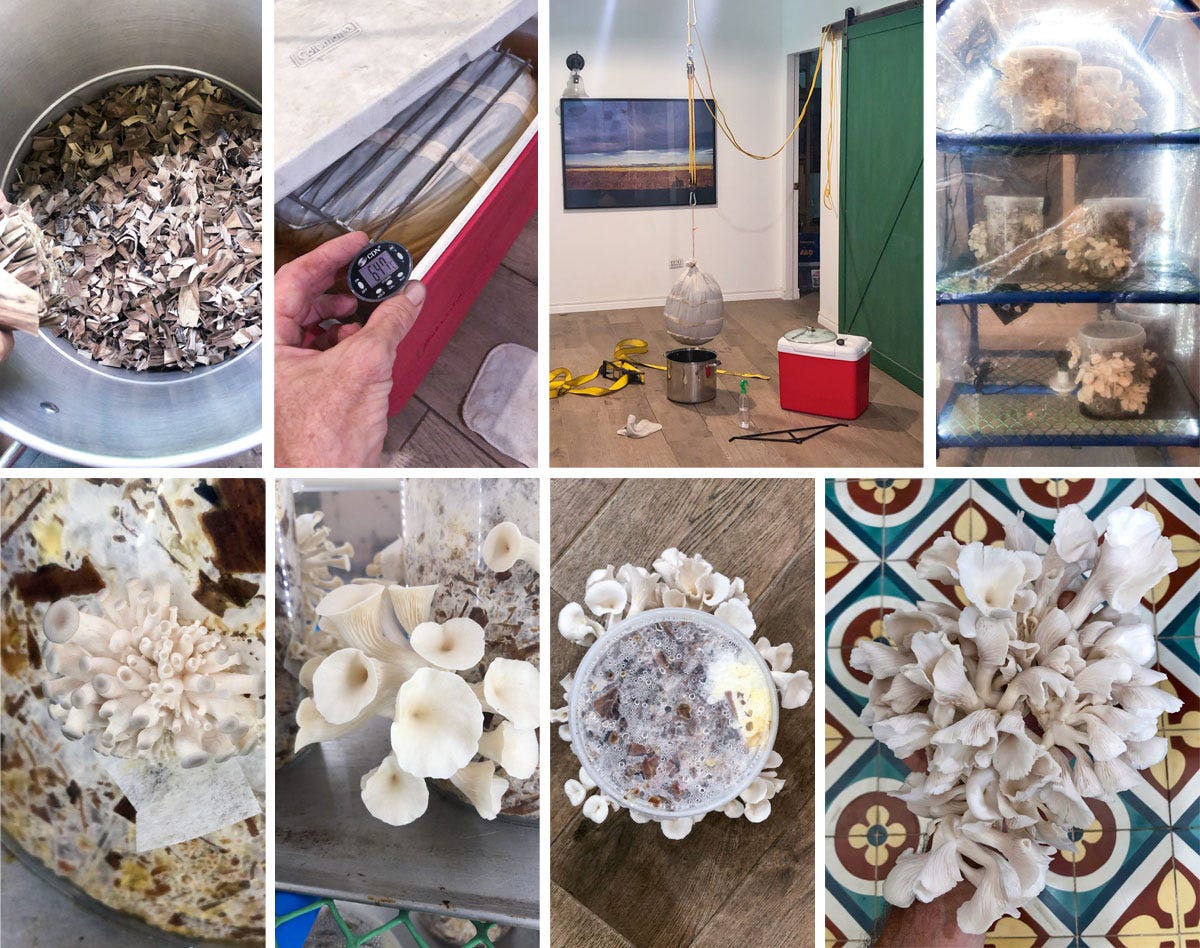
Worms worms worms
Worms were quite a common topic this year at the kitchen table. We often have to clarify which variety of worms we are talking about. Is it the composting worms (fed coffee grounds and banana peels), or the superworms (for fish/chicken feed and even human snacking) or Dada’s intestinal worms…
I paypal’d an anonymous dealer and nine days later received a package containing a vial with five Necator Americanus hookworm larvae inside. These I applied to a bandage, stuck it on a hairless spot on my arm and within minutes I could feel the itch of them burying into my skin. From there they eventually wind up in the intestine via the lungs and oesophagus. Deliberately hosting hookworms to help with health issues is called Helminthic Therapy.
The idea is that we co-evolved with intestinal worms and their absence due to modern hygiene, modern septic systems, wearing shoes and our cleaner living standards has caused an increase in autoimmune diseases and allergies. I have Coeliac disease and although I stick to a gluten free diet I still sometimes get “glutened” and have several days of feeling like absolute shit.
The girls of course named the five of them. I had to avoid certain foods because they were anti-Helminthic and could possibly kill off my worms. Sort of funny, because as it turns out, the tropics is a great place to get accidentally infected with hookworms of all sorts. There’s good ones and bad ones and obviously having too many of the good ones can also be very bad for you. But it also turns out that the tropical diet is full of foods that will keep the worms’ population size in check; black pepper, coconut, pumpkin seeds and ginger. I even had to forgo our sauerkraut during this time. There’s studies detailing the gut microbiome of rural Filipino people and worms abound (but again, kept in check by the simple tropical diet) and the autoimmune diseases of modern life and clean living are conspicuously absent.
While in the intestine the worms don’t reproduce. So if you inoculate yourself with five larvae, there will only ever be five in your body. They lay eggs which you shit out, and in order for the eggs to hatch, they need to come in contact with soil. Having a growing interest in ecology, this was quite the clincher for me; a very literal example of “healthy soil = healthy humans”. I tried harvesting mine to propagate and re-administer using a microscope but sadly none to be found. At some point I must have killed them off or my immune system rejected them. Will definitely be trying again at some point.
The Girls (the kids are alright)
There will be no Frozen movie references in this update. Thank fuck for that. Do people realise that becoming parents involves listening to the same songs on repeat for years, and years, and years? The girls, now ten and seven, finally moved on from what seemed like almost a decade of endless Anna, Elsa and Kristoph. Finally got them turned on to listening to music that both Monica and I also love, usually girl bands or female lead singers. I also keep an ear out for new stuff to introduce them to but my screening of possible offensive language is pretty poor. So the girls wind up getting one of our old iPhones without an internet connection to listen to their music on the weekends. We discovered that they made a special playlist on it called “Don’t listen to this” featuring song titles such as Unfucktheworld and including other songs with “bad words” in them.
One mealtime, the girls were blaming each other for using bad words. What followed was an amusing family discussion in which all the bad words were discussed and their meanings explained. Even allowing the girls to say each one out loud. Turns out Dada says the “S” word a lot (funnily enough it turned out to be “stupid”, not “shit”) and Mama often says the “F” word when she’s angry.
Last time the girls stayed up in the city for a couple of days, Lola dragged them along to church. Back home, a few days later, the girls surprised us when they claimed that the priest had said the bad word!
Both Monica and I were like “Whaaaaaat?!?”
Turns out it was “Jesus Christ”.
Fairies (fairies, fairies everywhere)
The girls can go for months obsessing about a topic; about book characters, about drawing birds, about making tiny food items from modelling clay. They went deep into this book series about fairies. There was Tess the sea turtle fairy, Tricia the Halloween fairy, Selena the sleepover fairy, Roxie the baking fairy, basically the A (Addison the April Fool’s Day fairy) to Z (Zadie the sewing fairy) of fairies, over 150 books each of a different type of fairy.
So every day it was fairies, fairies, fairies. And even up to now I still do the tooth fairy notes and slide a peso note under their pillow in the early morning dark. The ten year old has never displayed any doubt about it but maybe she’s just gullible like her father.
One time while Monica was away the girls and I went for a night walk along our driveway. It was close to a new moon so it was fairly dark and we turned off all the house lights except one. While slowly walking away from the house, I spotted a glow of light coming from the base of a stand of bananas about 20 metres away and pointed it out to the girls.
They both froze immediately.
Without hesitation, but almost panic stricken, they whispered that it was almost certainly fairies. By this time I’d already realised the light was a diffused reflection of the house light but no way I was going to let them in on that. I suggested we go take a closer look and the girls were horrified.
“Nooo! You’ll disturb them”.
Can’t be disturbing fairies, that’s bad, real bad.
The next morning while I was scything I spotted the youngest running out of the house well before her usual wake up time. She ran up the driveway and then slowly started stepping towards the banana tree fairy spot. She wouldn’t go close, just peering from a distance. Both girls wouldn’t go near the spot for days. They were so scared of disturbing the fairies.
For some reason I feel it’s an important job I have to do to keep these beliefs alive in them for as long as possible. Protect them from some iPad-addicted cousin or friend shitting on these “childish” ideas. Protect them from left brain-dominated thinking and science that often explains away the mythic, traditional and indigenous concepts9. We’re trying our best not to bury that zeal and passion and reckless eagerness of childhood under the crushing weight of formal schooling. A lot of that just involves listening to them and not giving our opinions in every answer.
We have a childrens’ book about old Philippine spirits, ghosts and monsters. A ghost here in the Philippines is called a Mumu. There’s the tiyának, a vampire that takes the form of a newborn baby lying and crying helplessly in the forest to lure its victims. The manananggál, a female creature that can sever its body in half, the upper of which sprouts wings to go hunt for victims. In the aquatic department of horrors there’s the siyókoy, a male mermaid creature but not so human-like, that loves to drown and eat their victims. A kápre is a giant hairy creature with body odour that sits in trees smoking his cigar. It’s only if his tree gets cut down that he turns vengeful. There’s also the nuno, who can inflict their victims with mysterious illnesses and fevers. Even my wife will still respectfully say “tabi-tabi po” (“excuse me” or “pardon me”) when she walks through parts of our land where the nuno may reside.
Sadly, it’s mostly negative and malicious spirits that remain in the wild forested places. The dominant religions of civilisation and agricultural indoctrination has murdered the many benevolent and kind spirits of the indigenous peoples. Driving people out of the “dark and dangerous” forests (often the “commons”) and into the “safe” open fields to tend their crops.10
I think it’s important that we raise our girls with the knowledge of indigenous peoples and their healthy respect and reverence for the land and all their non-human family. Raising two little girls so that they have a very healthy distrust of the government, the church, and all authority is difficult because they also always question everything you ask them to do!
How to stay sane in an insane world
Dougald Hine, who kindly let me join one of his courses in return for planting some native trees, said this a few years back which has helped me a lot:
“We don’t need to know how the story ends in order for bringing more beauty to the world to be a move that makes sense. However it ends, however bad things get, bringing more beauty into the world in the course of your life – I don’t think that can ever be the wrong answer.”
We’ve been on this land now for four and a half years and we’ve come to intimately love and respect it and all its beautiful residents. I’ve not spent a single night away. We’re incredibly lucky and privileged to have this life. None of this would be possible without my partner in crime, Monica. She’s as gung ho as they come and has never had qualms in going against the grain. We don’t know how things will turn out but we hope our home will continue to thrive and flourish. We hope to raise children that love and respect nature and understand that there’s no “us” without “them”. In the busyness of everyday home-making we may not always remember to, but when we can we must savour every precious moment of this miracle, this natural world in which we are immersed.
More things that have rocked my world lately
Millan Millan: if you haven’t heard of him it’s because they’ve neglected to include his critical work in the climate story. This essay series explains how the dangerously incomplete narrative surrounding CO2 being the single driver of climate came about. There are TWO drivers to climate; CO2 and LAND USE. The climate isn’t a machine with an engineering fix, but a living system that only can only be healed through restraint and restoration: Millan Millan and the Mystery of the Missing Mediterranean Storms.
"Our forests have enormous untapped potential. Most policy attention to date has focused on the potential of forests to store and remove carbon. While forests can be key in delivering around one-third of the annual mitigation needed to keep warming below 1.5°C, cutting-edge research suggests that tropical forests can also provide up to 50 percent more global cooling beyond what is accounted for by carbon emissions and sequestrations alone. A shortsighted focus on carbon neglects the many other ways that forests stabilise the climate—both locally and globally." (Thanks Alan Kirk)
Biodiversity regulating climate: “The idea that biology is affecting climate, a key concept that should be more widely spread for our climate’s sake, is already considered slightly radical. The idea that biodiversity is regulating the climate to benefit life, is even more radical.”: Adventures in Daisyworld by Alpha Lo who writes a thoroughly interesting and informative blog focusing on water.
Forest and Ecological Education blog: Getting kids outside and into nature, systems thinking skills and learning about relationships. “Field Trips for All of Us: Transformational Activities for Children and Their Adults”
Weekend Wild Child: If you're in the Philippines, this amazing group offers a chance for kids to get out in nature: “We name our journey as Wildschooling drawing inspiration from different alternative education models of homeschooling, unschooling, forest schooling, and gentle parenting, but more flexible and open; taking nature as our primary platform for knowledge, reflection, and discovery”. We went to our first one recently and it was the best day out I've had for a long time.
Anti-assholism memo: “Realizing we are ALL fucked up and that we have become assholes may be one (or the only) way to break this spell of modernity/coloniality, to seek rehabilitation and to do the painful decluttering and composting work that is needed to get ourselves out of the mess we have created.”
Adam Wilson’s Peasantry School Newsletter has been a must-read for me this past year: “This food is our gift. It is offered without charge to anyone who is hungry for any reason. This is not ‘FREE’ food. It is not value-less. It emerges from immense and careful labors. This food extends an invitation to trade transaction for relationship, commerce for community. Would you join this Circle of Eaters? There is no barrier to entry. Rather, a responsibility to consider: What are my gifts? And how might I join hands with others to sustain the whole?
Building the Future in Place: A case for sustainability at local and regional levels. “Degrowth advocates are doing what is necessary now, planting ideas. This hearkens to the often quoted words of economist Milton Friedman when advocating for free market policies that had been discredited by the 1930s Great Depression but were picked up in the 1980s after the economic turmoil of the 1970s. “Only a crisis - actual or perceived - produces real change. When that crisis occurs, the actions that are taken depend on the ideas that are lying around. That, I believe, is our basic function: to develop alternatives to existing policies, to keep them alive and available until the politically impossible becomes the politically inevitable.”
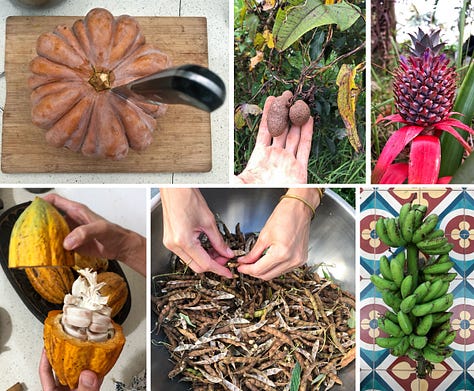
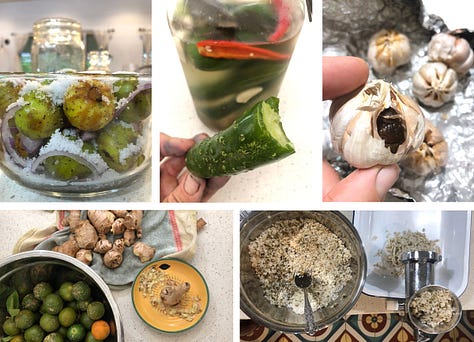
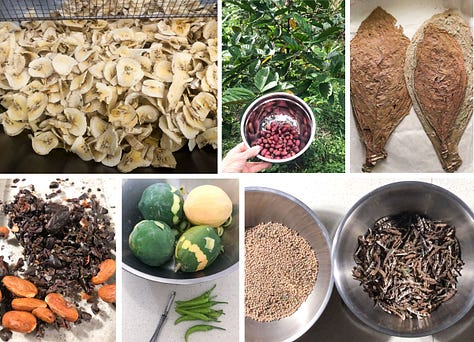
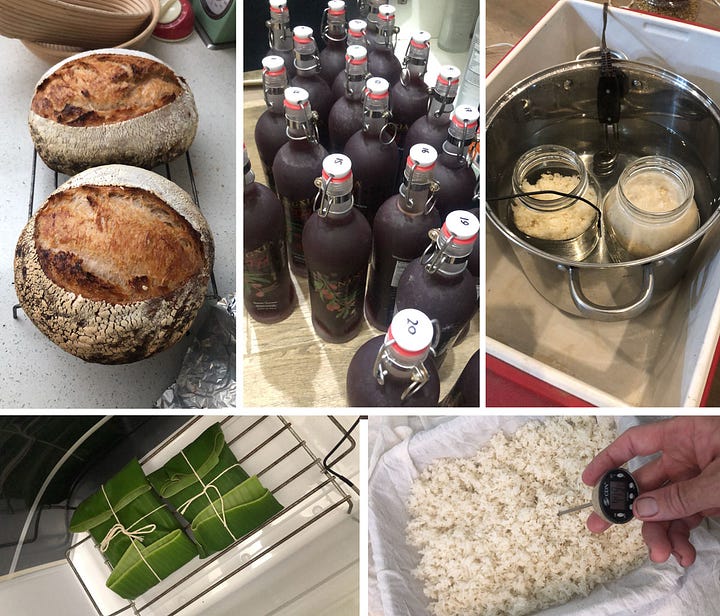
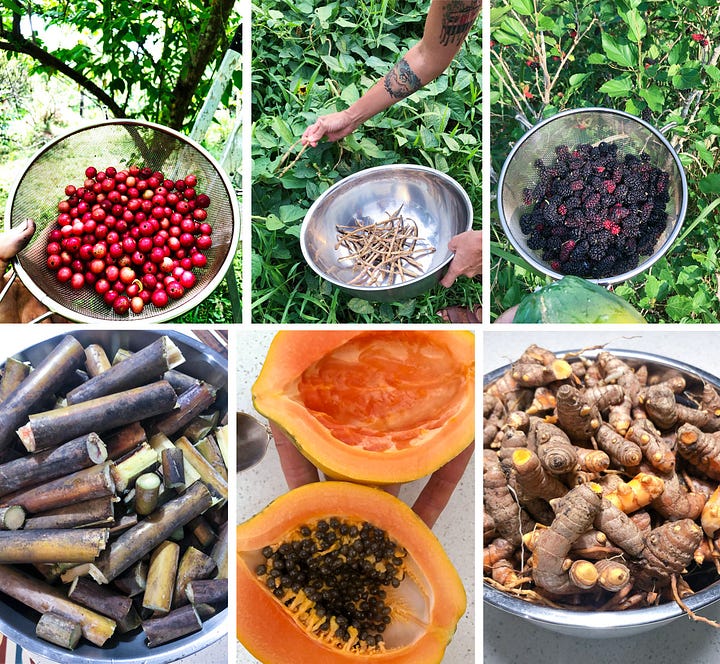

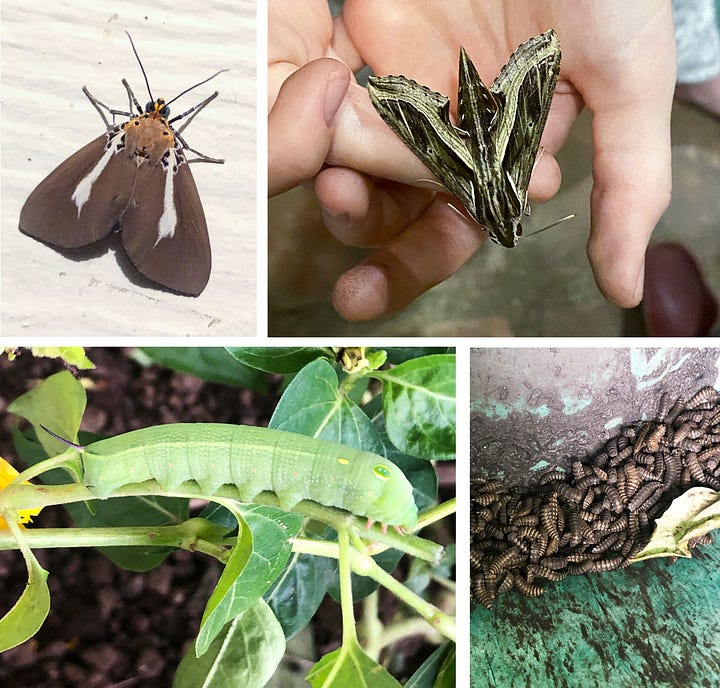
Footnotes
It’s taken me months to finish this: I put it off for quite some time while trying to make some sense of my sanity and getting lost amidst all the fantastic writing here on Substack. I’ve become unfamiliar with putting my thoughts down. Something that once was once a daily ritual of pen meeting paper is now a struggle. My days of daily journal writing ended many years ago when an aspiring young man snatched my backpack and jumped from a moving train somewhere just outside of Delhi. His patience in waiting for the opportune moment was admirable; long enough into the train journey for me to begin to relax and not long enough to let the train reach speeds considered too dangerous to jump from. So I let a helpful journal writing habit lapse. Might be time to start it again. Might help my memory.
Useless eaters: I hesitate to use the term because when I looked up its origins it was a Nazi/Fascist term for the Jews and others they wanted to exterminate. Considering the country I’m in, the origins of its current leadership, and the general political trends we’re seeing in the world today, maybe its use is not completely out of place but I use it more as a call against thoughtless consumerism.
Coffee: You could argue, quite rightly so, that coffee isn’t the most useful, calorific food to have in a food forest. But I’d argue it’s more important than calories. I tried giving up coffee for a while to fix my 15 years of sleep problems and I pretty much lost the will to live. So without it, there’s little chance of me getting off the couch in the mornings.
Hands down the best coffee I ever had was whilst I was lost walking someplace in Cuba. An old farmer saw me along the road and invited me back to the porch of his humble bright blue wooden house. Surrounded by banana and coffee trees, he brewed me a simple freshly roasted black coffee, the beans simply sun dried on his porch. Nothing’s ever come close to that coffee. Obviously the experience surrounding the coffee drinking was a massive part of it, and every time I eat something that I’ve grown and tended for that joy comes back. The coffee’s freshness was also a big part, ever wondered how many months ago your coffee was picked and how much it has deteriorated in quality since?
Spotting the vanilla’s first flowers: It’s not a mere coincidence that I happened to “randomly” spot the first flower in an area I rarely visit. I’ve read many instances, and experienced quite a few myself, of unspoken communication between plants and humans and my friend David even wrote a lovely essay about it.
Vanilla bean flower pollination: I say “needs” to be hand-pollinated; it’s sad that the small bee whose size is a perfect fit for clambering into the flower for a drink of its sweet nectar and fortuitously collecting some of the pollen on its tiny body, is no longer around these parts. Although I do have a friend who found native Philippine vanilla vines in the wild. There were a few of them, meaning that at some point there’d been seedlings from pollinated flowers. So that’s very interesting!
Pollarding: A great explanation of copping and pollarding and its historical context. Poor Proles Almanac is full of deeply researched essays often focusing on agroforestry.
Biochar: Albert Bates of The Great Change has written much about biochar and other potential solutions to many of our problems. Practical projects, not the magical thinking that techno-billionaires indulge in.
Fairies: As for me, I’ve not yet seen a fairy. Maybe I need to look a bit harder. I’ve had a few experiences that I have no way of explaining without sounding like I’m making shit up. So there’s no way I’d declare fairies don’t exist. There’s a Fairy Census listing “impossible” experiences from all over the world and Iceland’s elven folk held up a road’s construction for years.
Indigenous spirits: my ideas of this have mostly come from the musings of Nicholas Wilkinson and his conservation work at saving the saola in Vietnam (and failing?) and my friend David Lauterwasser and his excellent “An Animist’s Ramblings”.




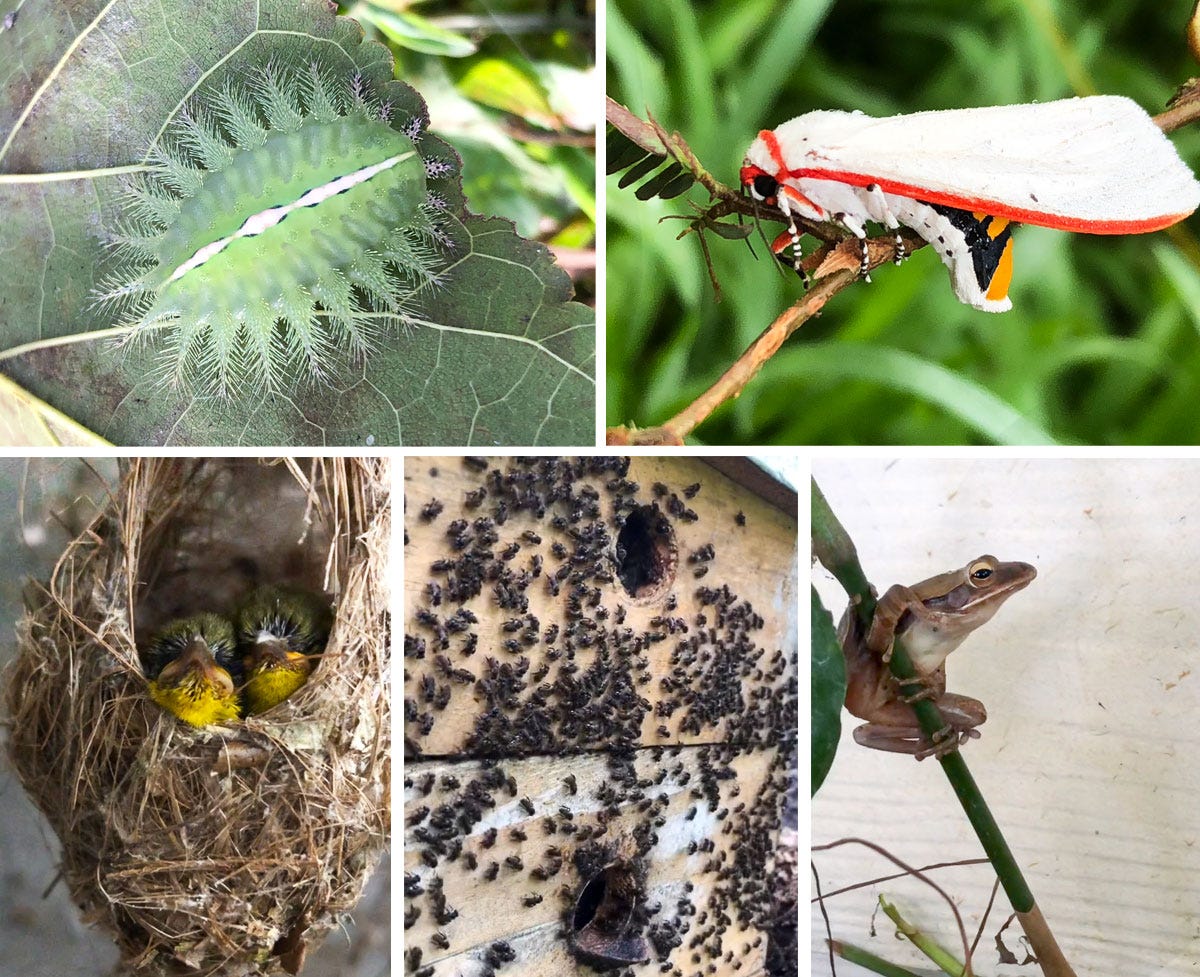

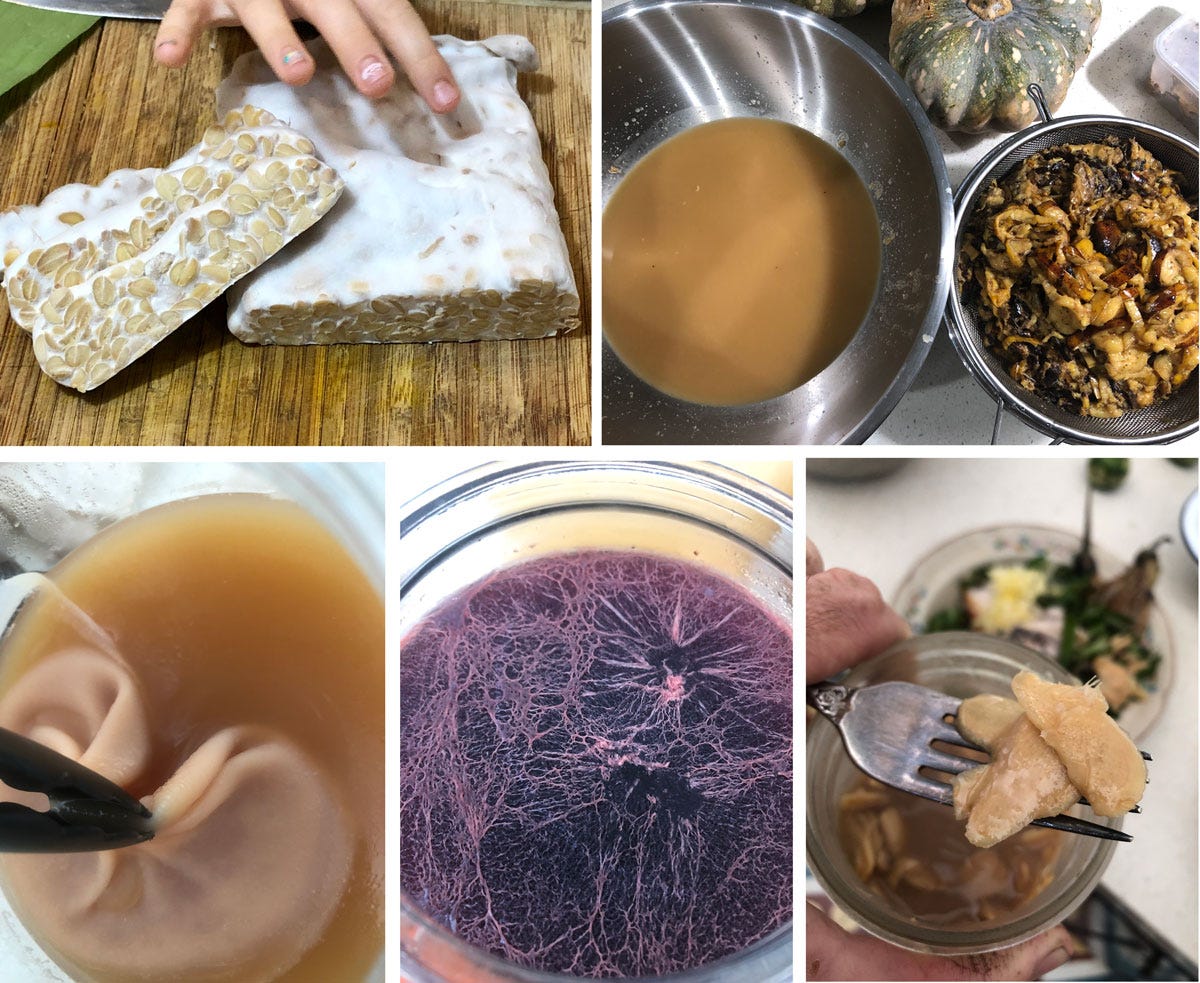

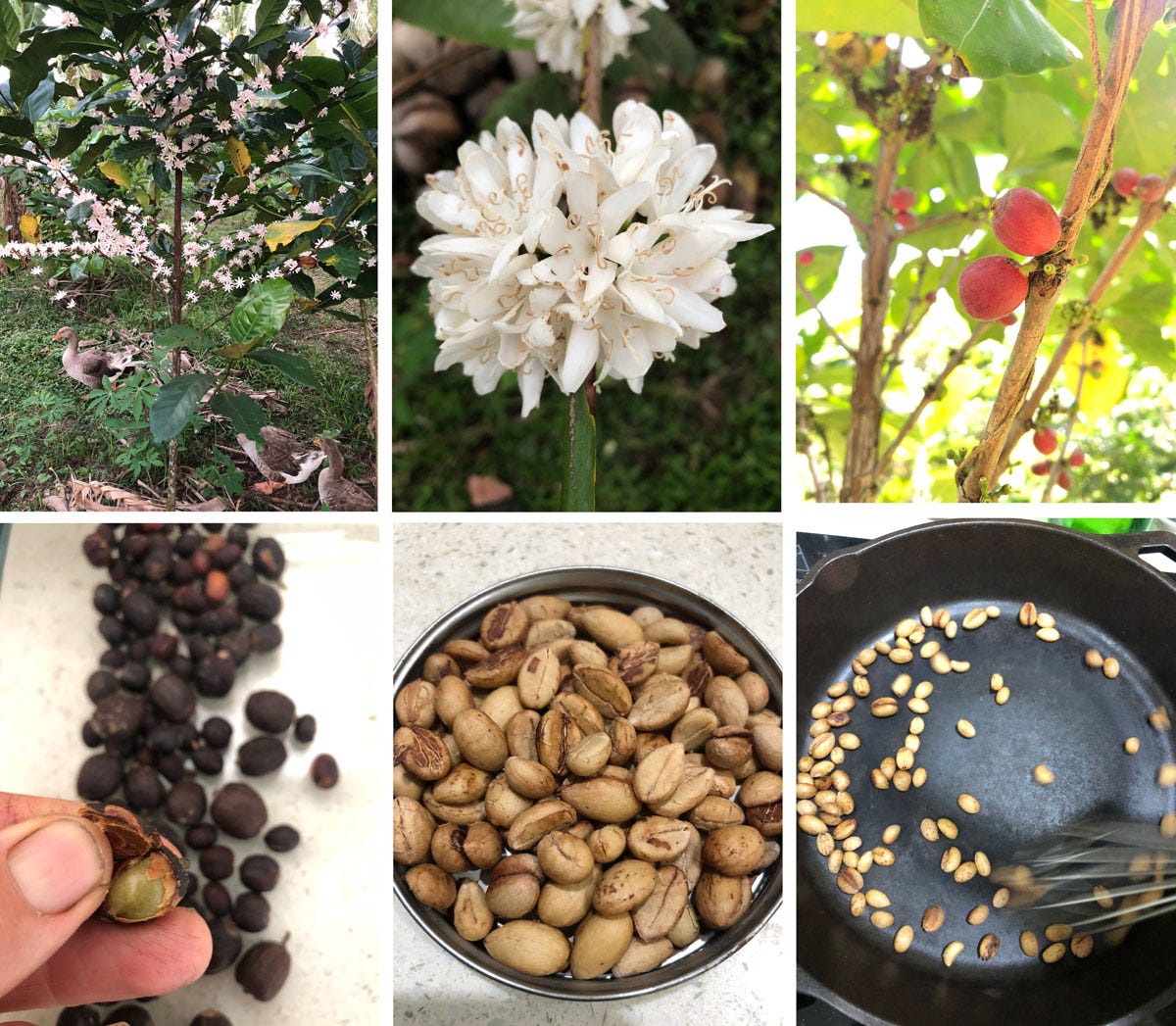

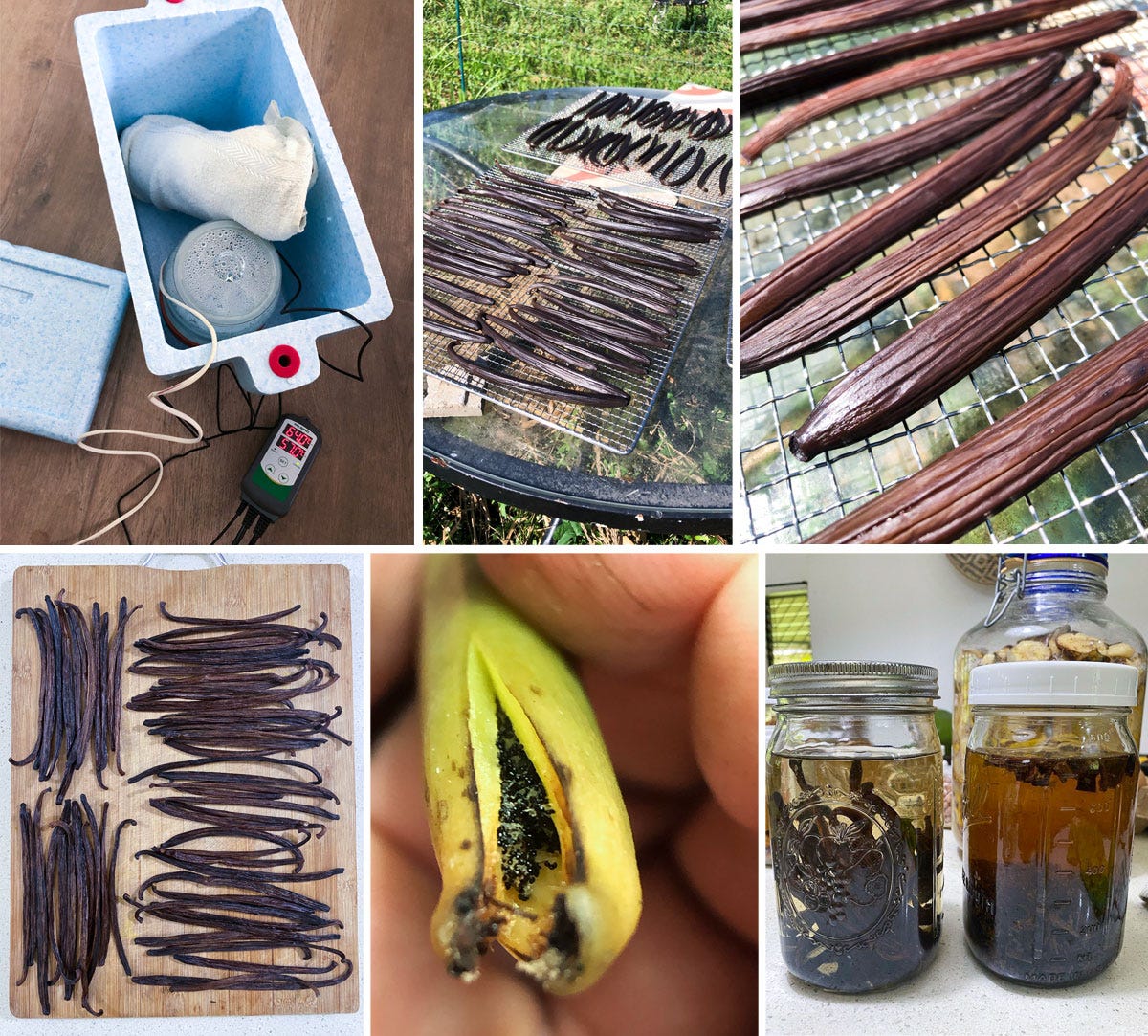
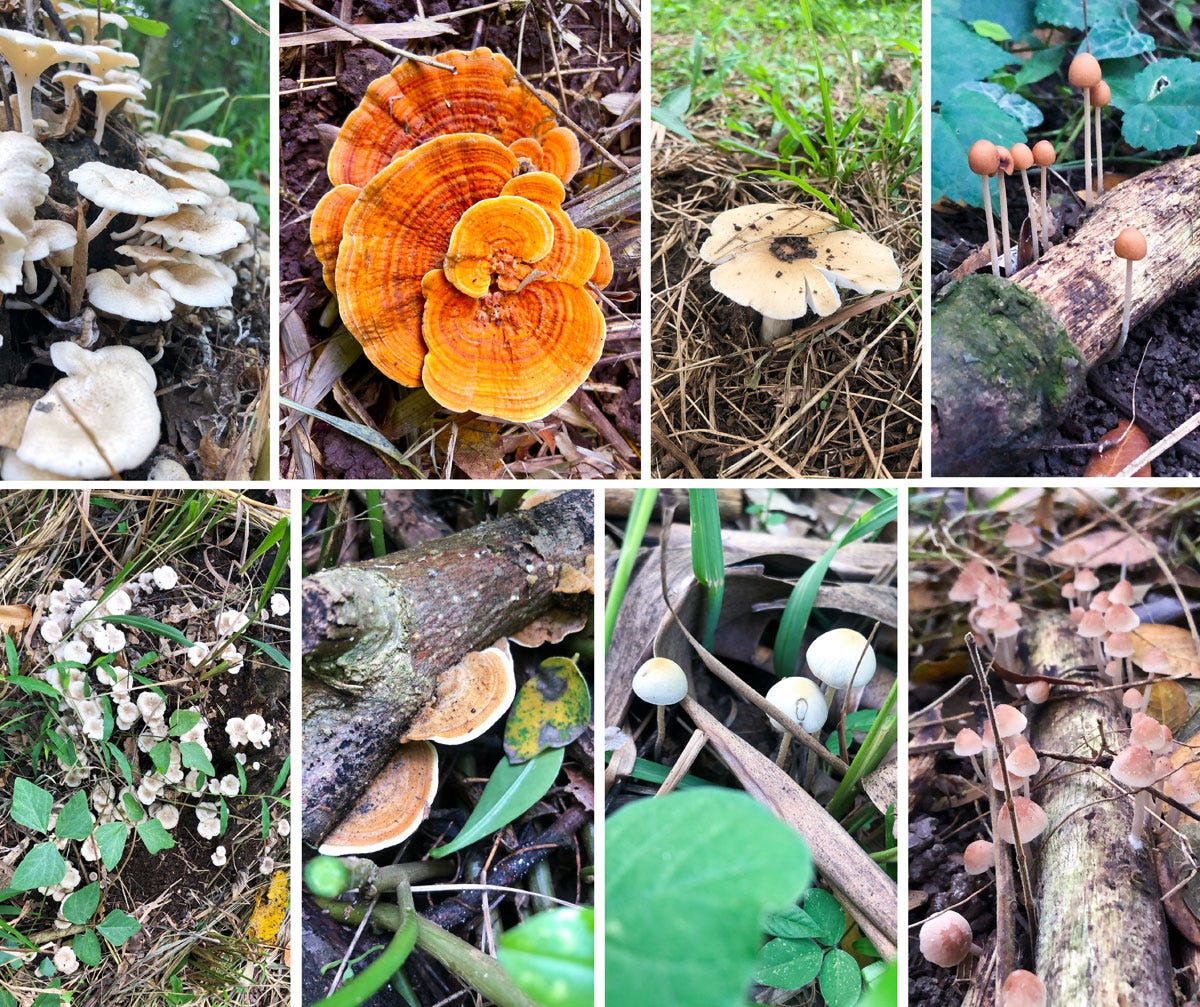

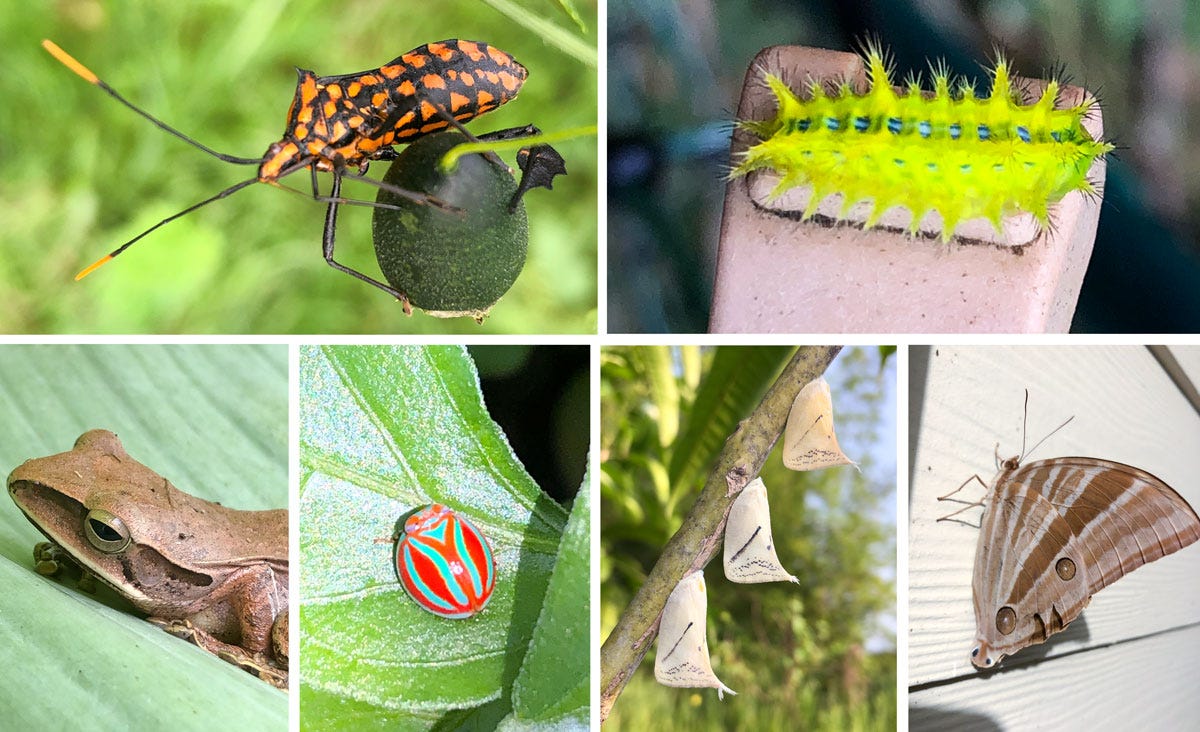
Hi Leon, I enjoyed your honest and intimate sharing. Sorry to hear about the animals. We also have our fair share of deaths and now we either eat or cook the dead animals for the other animals (dogs, cat, chickens, ducks). Our neighbour passes us her dead chickens and the animals gobble them up after we cook it. We had a water buffalo die on us and that was the toughest. Often the most mistakes and deaths happen when we first introduce the animal to our place. But we are fortunate that some of the animals were successful and numbers have multiplied and yielded us lots (goats, ducks, chickens). I guess it is also about differentiating between whether the death is due to an error that can be fixed, or is the animal just fundamentally not suited for the conditons (climate, vegetation, feed, etc) at the farm.
I totally get what you mean about being possessed when you are handling a machine. I was going to write something on that. I refuse to get a chain saw so i have been using a good pruning saw (try Bahco) and an axe. Might get a 2 person saw in future (like David).
There is so much i resonate with and want to comment on but the essay is very long! Maybe next time you can split them up into separate posts under the topics you have listed because they are all interesting by themselves.
Amazing work- I loved reading every bit of this. I can relate to feeling flattened even so long after that epic La Niña flooding cycle recently. All I focused on was keeping my goats alive for about six months there. Hope you continue writing whenever you feel inspired (and not to churn out "content" on a schedule to feed the algorithm).